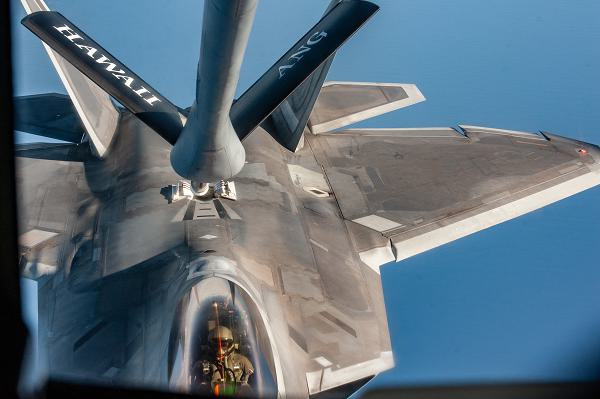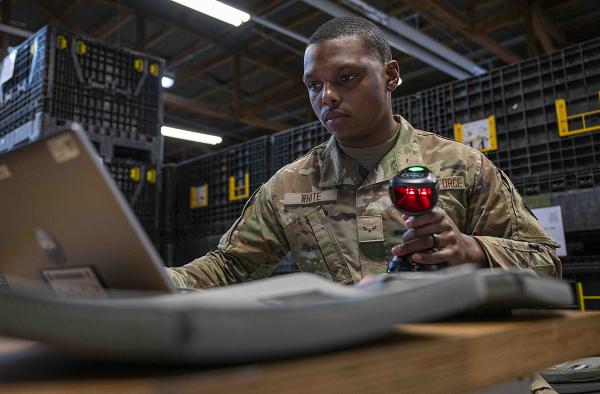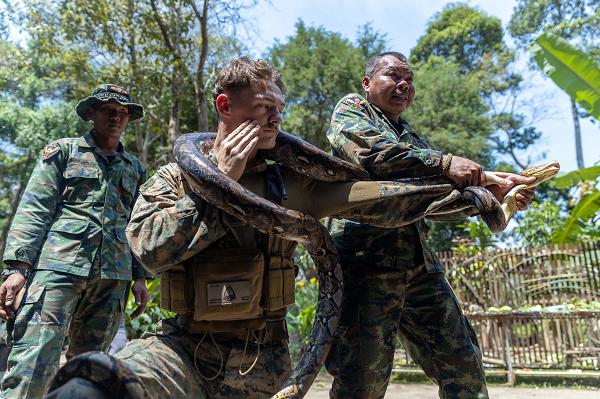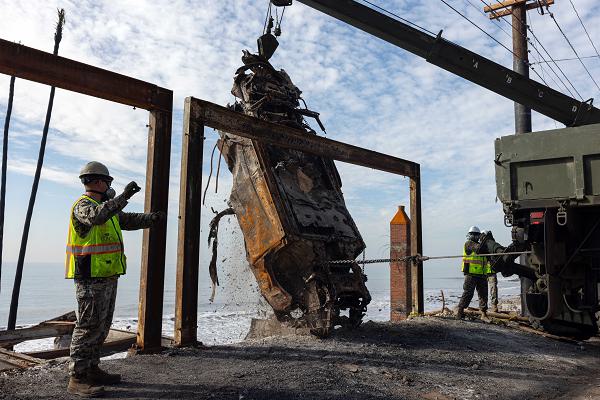- Details
- Hits: 1696

Pear Harbor, Hawaii. (March 5, 2025): What is it like to maneuver a jet at three hundred miles an hour to within sixty feet of a giant flying gas station? For American pilots, it is routine. In this photo by Senior Airman Roann Gatdula, an Air Force KC-135 Stratotanker assigned to the 203rd Air Refueling Squadron refuels an F-22A Raptor as they participate in Sentry Aloha 25-1. Staged annually by the Hawaii Air National Guard, the exercise involved 800 joint services personnel and thirty aircraft from six states.
The giant gas station is the KC-135, manufactured by the Boeing Company, which can fly fifteen hundred miles carrying up to 200,000 pounds of highly explosive jet fuel. The KC-135 dispenses fuel using either a fixed boom or an extended cable with a probe and a drogue to connect to receiving aircraft. There are approximately 390 of these refueling workhorses that enable U.S. planes to remain aloft almost indefinitely.
- Details
- Hits: 1544

Spangdahlem Air Base, Germany. (February 8, 2025): Just like Americans do at the kitchen table, the U.S. Air Force must account for everything it purchases. With a budget of $1.88 billion a year, keeping track of every single item is a tall order. In this photo by Senior Airman Jessica Sanchez-Chen, Airman 1st Class Deshawn White, 52nd Logistics Readiness Squadron, scans individual plates into a Radio Frequency Identification (RFID) system.
RFID uses radio waves to automatically identify and track objects using electronic “tags” that store information and transmit data automatically. We have all seen grocery clerks use point-and-shoot devices to keep inventory, essentially aiming a beam at a shelf tag to “read” its information. Unlike a barcode, the RFID tag does not need to be within the line of sight. The tag is activated when in range of the RFID reader which then “interrogates” each tag, extracting the information attached to each item.
- Details
- Hits: 1466

Sattahip, Thailand. (February 26, 2025): If you are a Marine looking for a jungle to play in, there is no better place than the triple canopy forests of Thailand. In this photo by Corporal Migel A. Reynosa, Corporal Jayden Reed learns snake manipulation techniques from a Royal Thai Armed Forces service member during a jungle survival class. The Marines are participating in Exercise Cobra Gold 2025, the oldest and largest combined exercise in mainland Asia. Started in 1982, this years event included 3,200 U.S. personnel and forces from Singapore, Indonesia, Japan, the Republic of Korea, and Malaysia.
While not rumbling in the jungle, American forces trained with their Thai counterparts to respond to natural disasters and humanitarian emergencies. Teams practiced responding to collapsed buildings, chemical spills, and how to provide mass medical care. Other units held command and control exercises with Royal Thai Marines in the dense jungles of this island nation.
- Details
- Hits: 1349

Finland. (March 7, 2025): In nature, the Puma is known for its stealth and keen eyesight. In the skies above the Baltic Sea, it is a pair of American eyes that never blink. In this photo by Lance Corporal Brian Bolin Jr., Navy Petty Officer 1st Class Kepono Gowan launches an RQ-20 Puma unmanned aircraft system during Operation Baltic Sentry 25. This NATO-led operation is in response to the sabotage of vital underwater infrastructure in the Baltic Sea.
The alliance is responding to attacks against energy and data cables between Finland and Estonia that occurred at the end of December 2024. These cables are essential because they transmit both electricity and more than 95% of internet traffic between these Nordic countries. They also carry an estimated 10 trillion-dollars’ worth of financial transactions every day.
- Details
- Hits: 1312

Parris Island, South Carolina. (February 26, 2025): It seems only natural that the All-Marine Corps men’s golf team would emerge as champions on this hallowed ground. In this photo by EJ Hersom with DOD, Air Force Technical Sergeant Dalton Dishman hits a golf ball out of a sand trap during the 2025 Armed Forces Golf Championship at the Marine Corps Recruit Depot. Parris Island is legendary for all those who successfully endured its tortures to become U.S. Marines.
The four-day 72-hole medal play tournament format brought together teams from the Army, Marine Corps, Navy, Coast Guard, Air Force, and Space Force.
- Details
- Hits: 1519

Pacific Palisades, California. (March 3, 2025): When it comes to wildfires, the danger isn’t over when the flames go out. In this photo by Lance Corporal Jeslianne Torres, Corporal Cameron Bettencourt guides a winch to remove dangerous hazardous waste from the debris of a suburban home. At the request of the Federal Emergency Management Agency (FEMA), U.S. Northern Command deployed roughly 170 active-duty personnel to help contain and remove hazardous materials created by the Eaton and Palisades fires.
According to FEMA, the fires that broke out January 7th killed twenty-nine people and burned over 37,000 acres. Over sixteen thousand structures were destroyed, mostly in urban areas, containing numerous sources of hazardous materials. Common household items, such as propane tanks, paints, automotive oils, herbicides, and pesticides are extremely toxic when burned. Of particular concern are lithium-ion batteries from electric and hybrid vehicles. These batteries can spontaneously re-ignite and explode emitting toxic gases and particulates into the atmosphere. Burning certain materials like plastics, treated wood, and electronics releases harmful chemicals like dioxins, benzene, and heavy metals that are linked to cancer. Also, ash from the fires can leach into the soil and contaminate groundwater.


